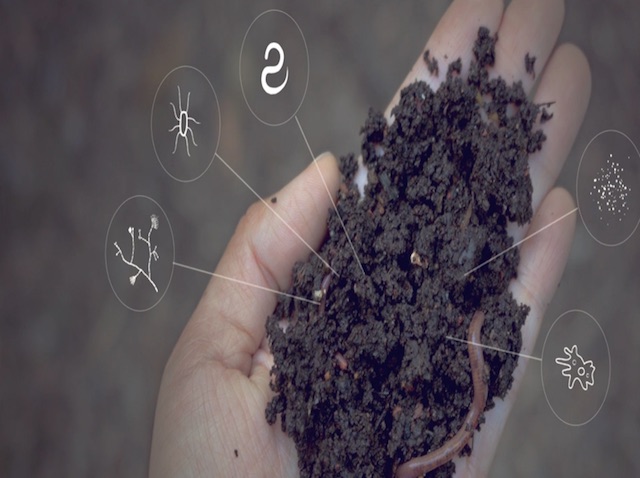Picture the stark landscapes synonymous with Cornwall; such as the purple heathers that contrast with the blue of the ocean below. I’ve included a beautiful reminder. This landscape is not only maintained by ungulate grazing, but is built upon the soil that not only holds so much life, but is vital to its continuation.
|
|
| The Lizard, Cornwall we all know and love. The soils here are situated on Serpentine rock, which is completely unique to The Lizard. They produce calcium and magnesium rich soils whose alkalinity enables rare plant species to grow such as Cornish heath. |
It is hard to imagine that 1 gram of soil can contain 1 billion bacteria. These bacteria and all life within what is often called ‘dirt’ and taken to be an inanimate object makes up to 25% of Earth’s biodiversity. One measurement of soil’s fertility is through the life contained within it. Digging into soil and seeing earthworms is evidence of a nutrient rich, thriving and importantly a living environment. A healthy soil supports all flora and consequently fauna that reside on this earth. So definitely something we should be conserving!
 |
| Nematodes, Mycorrhiza (fungi), bacteria, Earthworms are a few of the organisms within healthy soil. |
NFU recognises that farmers value this resource to enable continuation of providing us with nutritious foods. But I believe it is important it doesn’t become necessary to rely solely on fertilisers to replace the lost nutrients when crops are harvested, as not only does this mean soil cannot provide life within itself, but it is less capable of producing food. Furthermore, the chemicals can have negative impacts on water quality through leaching of the phosphates and nitrates vital for plant growth. Another issue is uncovered soil after crops are harvested is susceptible to erosion and 1cm of soil can take 500 years to produce but can be blown away a lot quicker.
Some of the many ways that the conservation of soils can be achieved I would like to share, and it is not surprising that maintaining the soil helps the ecosystem as a whole.
Firstly buffer strips on field margins not only provide habitats for wildlife, but also help prevent the erosion of soils. The growing of cover crops over autumn can also prevent erosion post-harvest through retaining soil structure, whilst also returning the nutrients necessary for plant growth into the soil. Additionally annual crop rotation can maintain fertility and low-tilling practises (disrupting the soil by digging) although going against convention are now understood as helpful to maintain organic matter within the soil and allow micro-organisms to keep decomposing dead plant matter to replenish nutrients.
As the importance of soils becomes better understood, farming practises are changing from traditional tilling and application of fertilisers to the soil, to a less heavy impact system unless with the addition of organic matter occurring through plants decomposing in-situ. In working to maintain the life and nutrients within the soil, only positive results can follow with healthier yields and soil that can keep on giving.
Published: Jan 2018
Author: Ellie Brown (Farming Coordinator)
